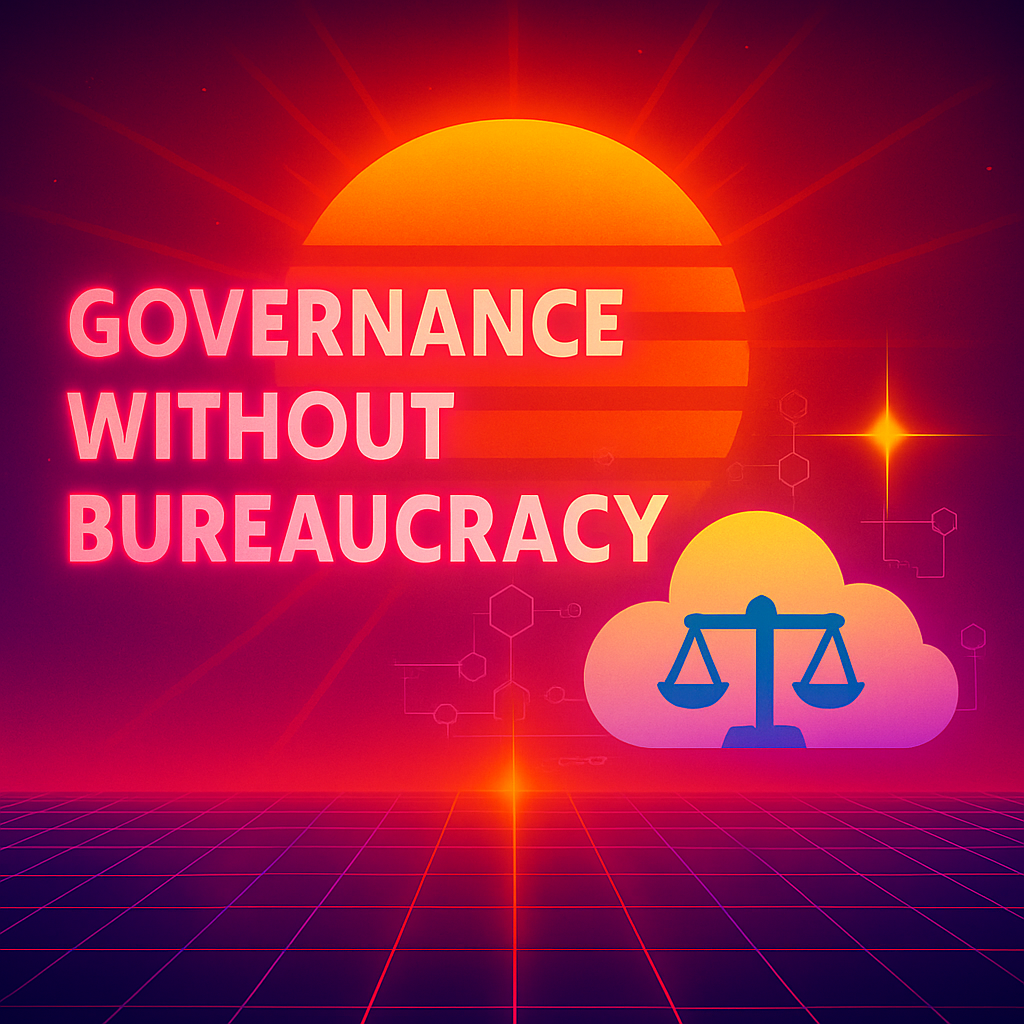Governance Without Bureaucracy

When most leaders hear the word governance, they picture bureaucracy. Endless approval chains. Policy binders that collect dust. Committees that talk more than they act.
Here’s the truth: governance done right is not red tape, it’s the discipline that accelerates digital transformation.
Without governance, transformation spins into chaos. With too much governance, it suffocates under its own weight. The sweet spot is building governance that feels natural, practical, and outcome-driven.
Why Governance Matters More Than You Think
Governance isn’t about creating hurdles. It’s about creating trust.
- Trust in the data.
- Trust in the decisions.
- Trust in the process.
Without governance, bad data sneaks into reports, priorities shift on a whim, and technology gets deployed without alignment. Hanisch et al. (2023) emphasize that governance is only effective when decision rights and responsibilities are clearly defined; otherwise it’s just ceremony.
And governance isn’t optional anymore. Gartner (2022) highlights that organizations with strong governance frameworks outperform peers not just in compliance, but in agility, because they make better, faster, and more consistent decisions.
MIT Sloan also reminds us that governance is cultural as much as structural. Employees expect leaders to model purpose and fairness, not simply enforce process (MIT Sloan Management Review, 2023). When governance reflects values and purpose, it creates alignment rather than resistance.
What Happens Without Governance
If governance doesn’t exist or is treated as an afterthought, transformation quickly derails:
- Data loses integrity. Without rules, everyone defines their own “truth.”
- Decisions bottleneck. Leaders make gut, reactive calls instead of following clear processes.
- Shadow IT grows. Teams spin up tools outside enterprise standards.
- Risk multiplies. Security gaps widen, compliance breaks, and costs climb.
The irony? Leaders often think skipping governance will go faster. In reality, the lack of governance slows everything down once rework, firefighting, and finger-pointing start piling up (ISACA, 2019).
Governance Without Bureaucracy: What It Looks Like
Governance can be lean and effective when it follows three principles:
- Simple Rules, Clear Boundaries
- Define a small set of rules that everyone follows.
- For example: one source of truth for customer data, one security framework, one system of record for financial reporting.
- Decision Rights That Empower, Not Paralyze
- Who approves new data definitions? Who decides system integrations? Who sets funding priorities?
- Clear decision rights speed up execution by removing confusion (Weill & Ross, 2019).
- Embedded in Daily Work
- Governance isn’t a quarterly review. It’s built into your daily processes.
- Dashboards, workflows, and check-ins should all reinforce governance naturally.
Lessons from the Field
Some organizations prove the point. For example, Johnson & Johnson built a global data governance program tied directly to business value. Rather than dozens of new committees, they created data stewardship roles inside existing teams and gave them clear decision rights. The result: fewer data disputes, faster regulatory reporting, and better trust in analytics (Harvard Business Review, 2021).
On the other side, financial firms that treated governance as just “IT paperwork” ended up facing costly fines when compliance gaps surfaced. This type of "governance" becomes misaligned, trapped in policy documents no one used (Deloitte, 2020).
The lesson is clear: governance either accelerates transformation or undermines it, depending on how leaders design and live it.
How to Build Practical Governance
Here’s a four-week plan leaders can use to shift governance from overhead to acceleration:
Week 1
Action: Identify 2-3 areas where governance is considered weak or nonexistent. (Could be data, decision rights, or even vendor management)
Purpose: Focus attention where chaos is most costly.
Week 2
Action: Define ownership and decision rights clearly for those areas. Use a RACI chart. Document them in plain language so everyone understands.
Purpose: Makes governance visible and simple.
Week 3
Action: Integrate governance into existing workflows. Could be meetings, tools, or even dashboards (if mature enough).
Purpose: Governance becomes muscle memory, not an add-on. The more you practice, the more it becomes a habit.
Week 4
Action: Track and communicate results. Show how governance has reducedd errors, improved outcomes, and more importantly...saved time.
Purpose: Reinforces that governance can deliver value. Not red tape.
Brutal Truths Leaders Need to Hear
- If your governance process takes longer than the work itself, you built bureaucracy.
- If no one knows who owns a decision, you don’t have governance, you have chaos.
- If governance is a separate “project,” it will fail.
It has to live in daily operations.
Governance Activates Transformation
When governance is lean, trusted, and embedded:
- Data stays clean and reliable.
- Decisions move faster and stick.
- Technology aligns with business outcomes.
- Risk is managed without slowing down.
Governance doesn’t strangle transformation. It’s the operating system that makes it sustainable.
Final Word
The second step to real results isn’t about slowing down with layers of bureaucracy. It’s about building governance so natural and disciplined that transformation becomes scalable, repeatable, and trusted.
“Governance is not about saying no. It’s about creating the conditions to say yes — with confidence.”
That’s the difference between digital chaos and digital acceleration.
Next in the Series: From Features to Outcomes.
Let’s get real on why business results; not feature checklists, should drive every technology decision.
Real talk. Real strategy. Real results in digital transformation.
References
Deloitte. (2020). Data governance and regulation in financial services. Deloitte Insights. https://www2.deloitte.com
Gartner. (2022). Digital governance: What it is and why it matters. Gartner. https://www.gartner.com/en/articles/digital-governance-what-it-is-and-why-it-matters
Hanisch, C., Lindeque, J., & Sütterlin, S. (2023). Digital governance: A conceptual framework. Journal of Business Research, 160, 113765. https://doi.org/10.1016/j.jbusres.2023.113765
Harvard Business Review. (2021). How Johnson & Johnson built a data governance strategy that works. Harvard Business Review. https://hbr.org
ISACA. (2019). COBIT 2019 framework: Governance and management objectives. ISACA. https://www.isaca.org/resources/cobit
MIT Sloan Management Review. (2023). Leadership’s digital transformation: Leading purposefully in an era of context collapse. MIT Sloan. https://sloanreview.mit.edu/projects/leaderships-digital-transformation
Weill, P., & Ross, J. W. (2019). Designed for digital: How to architect your business for sustained success. Harvard Business Review Press.